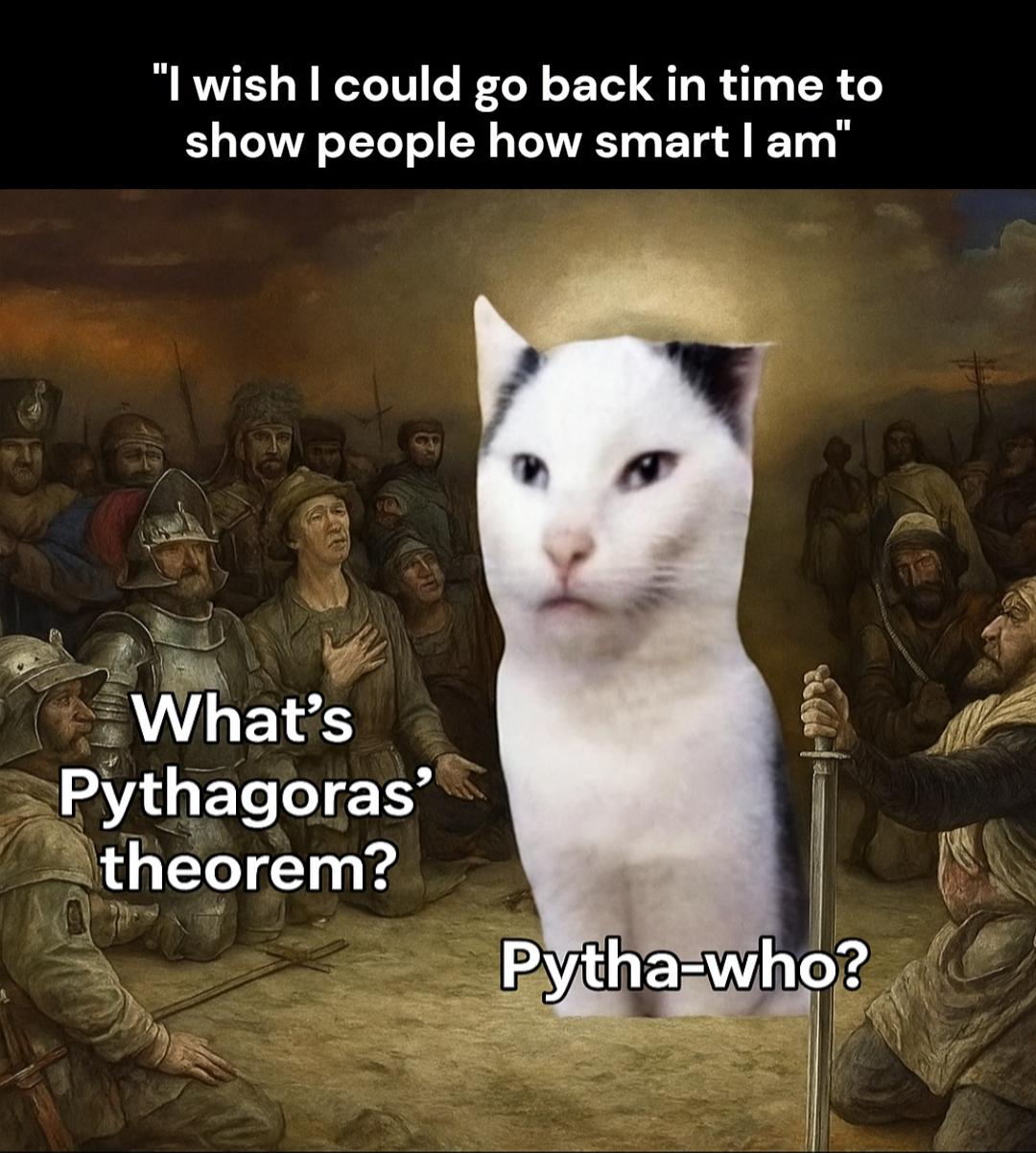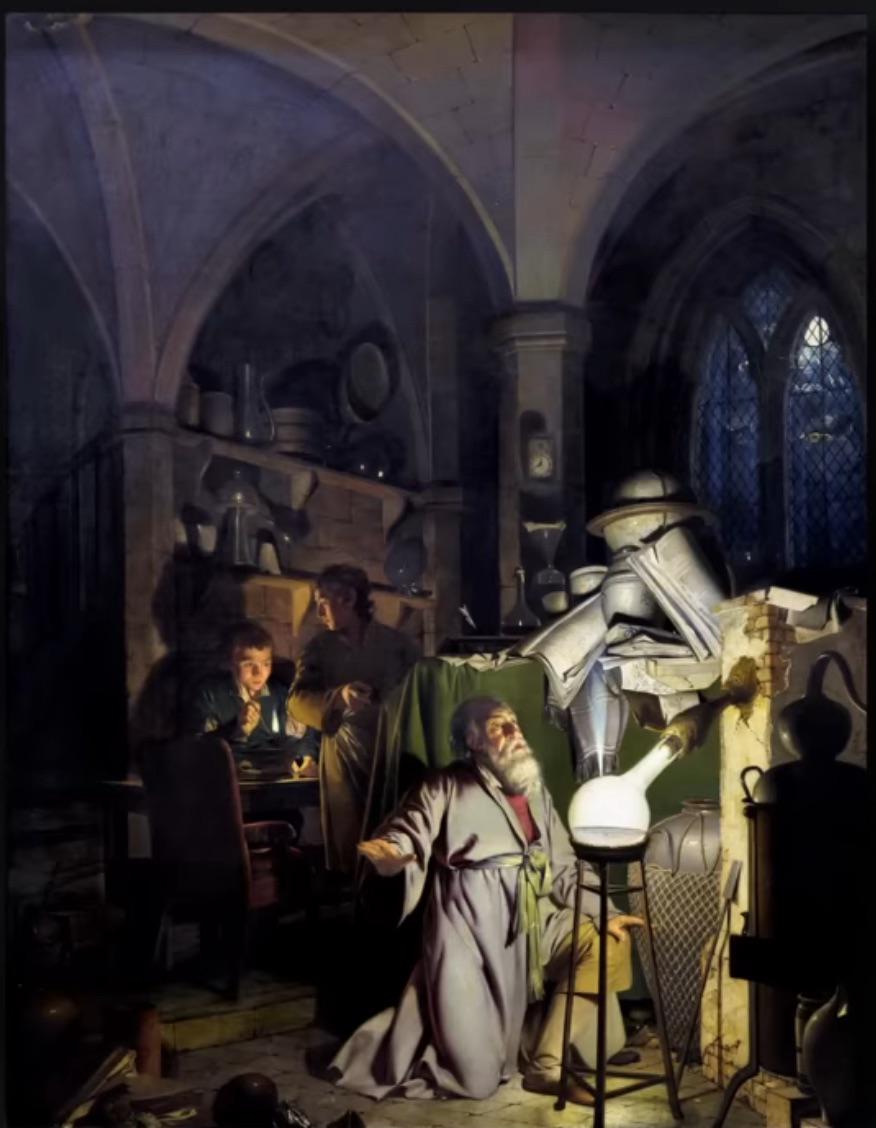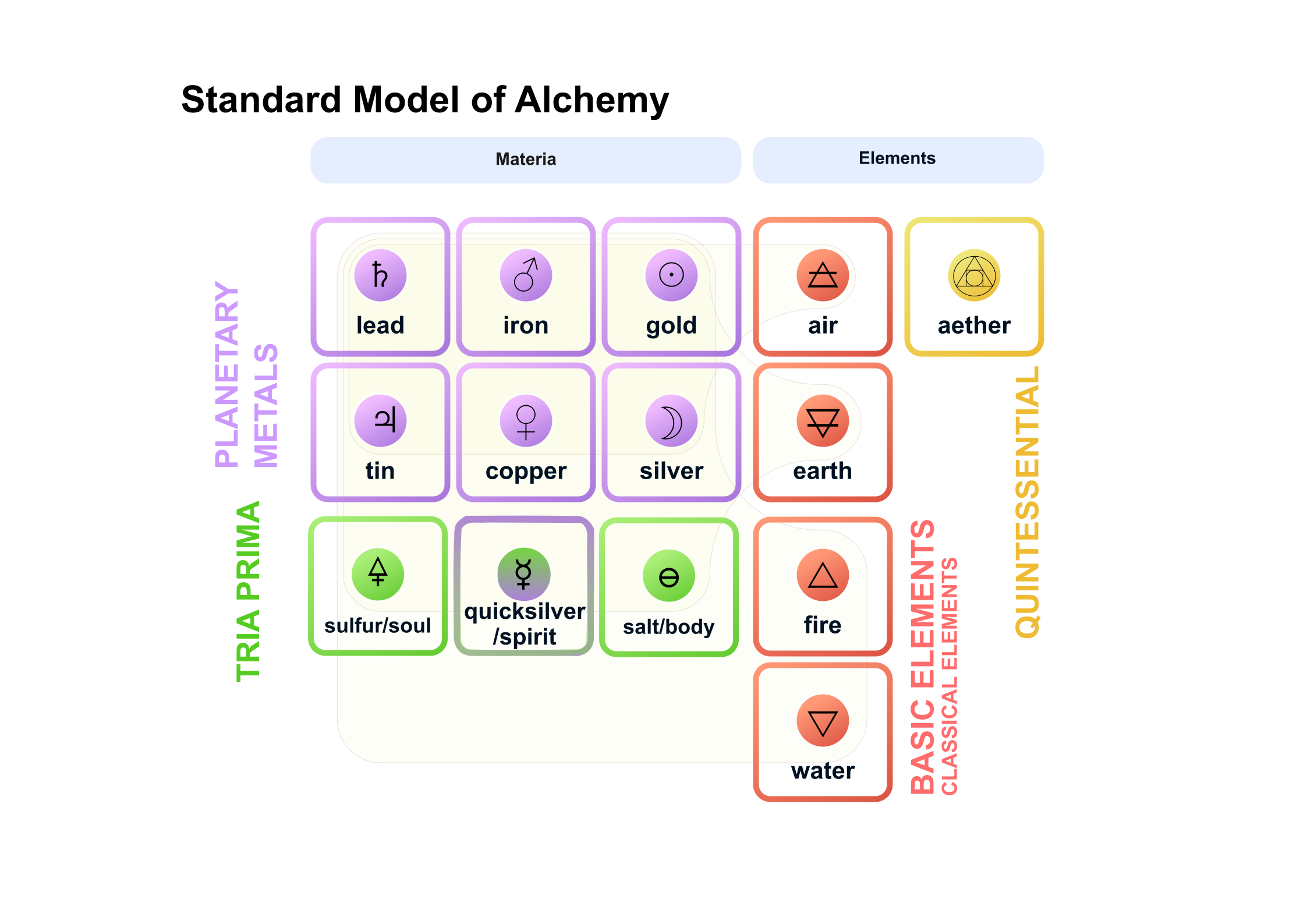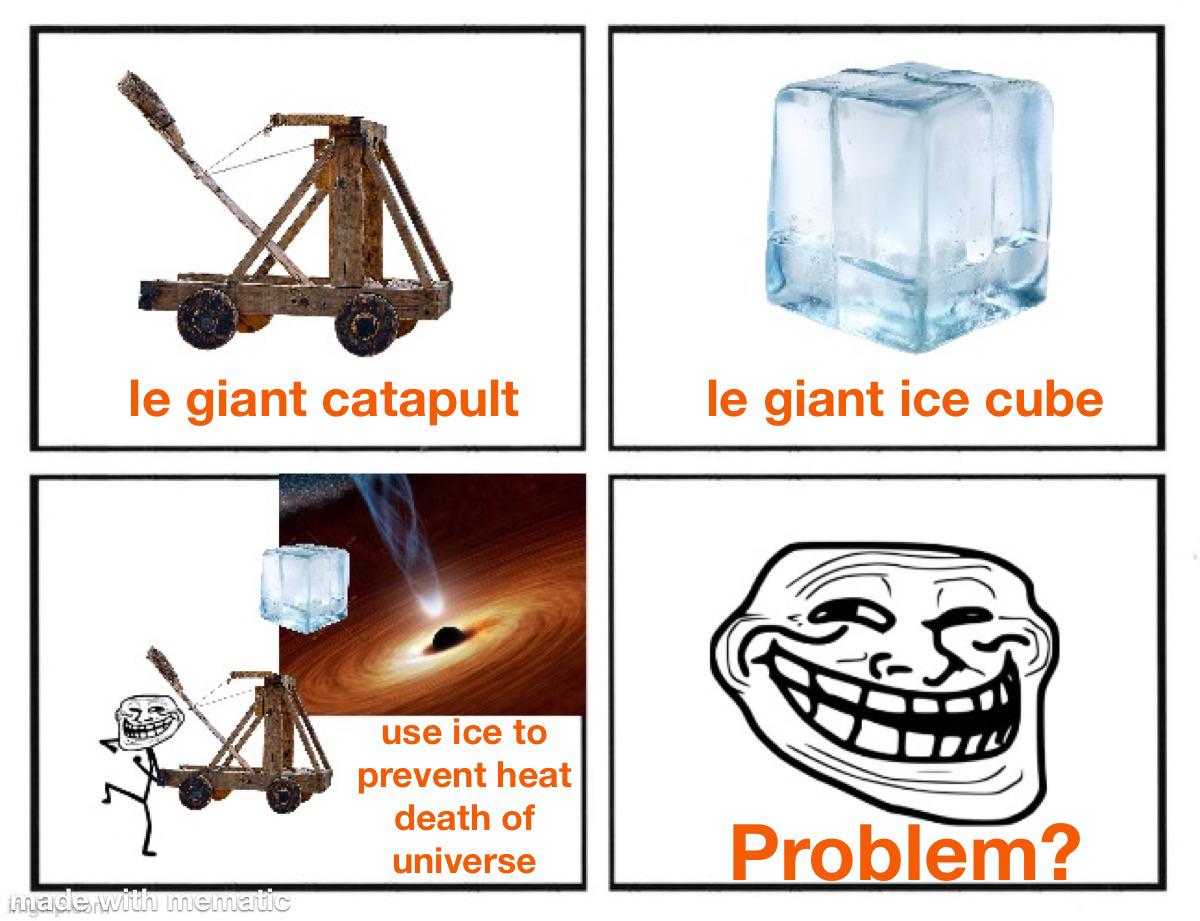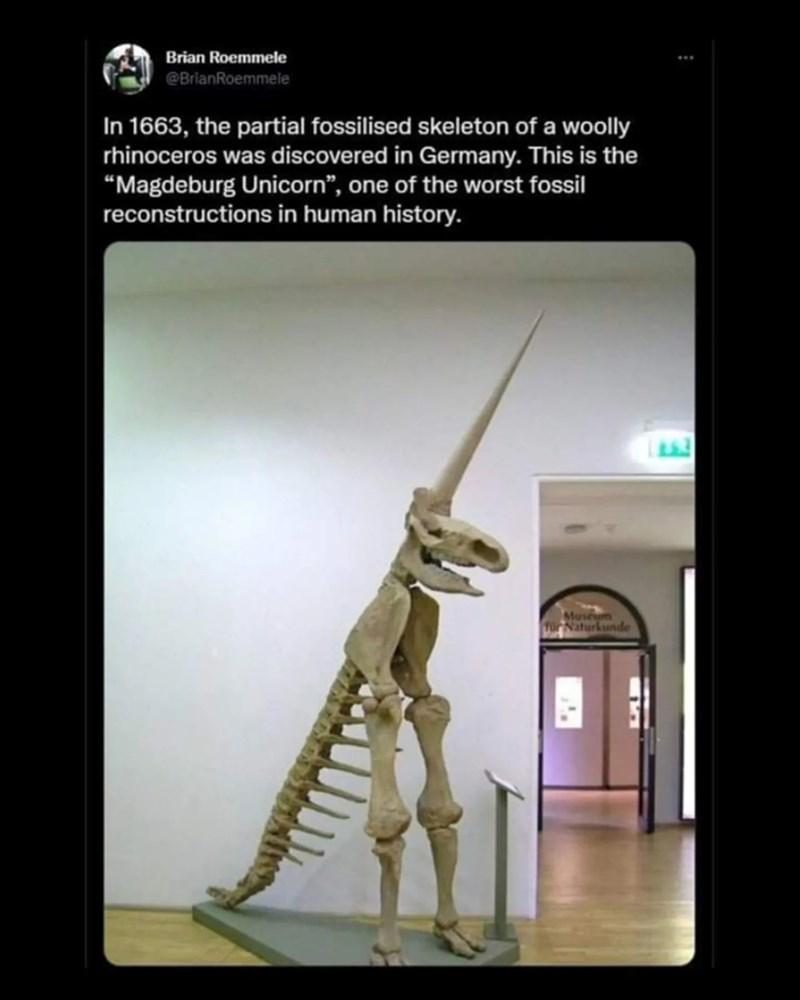Time-traveling to medieval times with knowledge of the Haber-Bosch process would be the ultimate flex... until they ask you how it actually works. The meme perfectly captures that moment when your grand plans to impress people from the past with modern science hits the wall of "wait, I don't actually understand the details." For those wondering, the Haber-Bosch process revolutionized agriculture by synthetically fixing atmospheric nitrogen to create ammonia for fertilizers. It's why we feed billions today instead of using, well, poop. But could most of us explain the catalysts, high pressures, and reaction mechanics involved? Probably not without frantically googling it first. The medieval folks would've benefited enormously from this knowledge, but our time-traveling cat can only offer an "idk" when pressed for details. Classic case of "I understand the concept enough to sound smart at parties but not enough to actually implement it." Medieval agriculture remains unchanged, and our would-be genius returns to the present, tail between legs.


 Academia
Academia
 Ai
Ai
 Astronomy
Astronomy
 Biology
Biology
 Chemistry
Chemistry
 Climate
Climate
 Conspiracy
Conspiracy
 Earth-science
Earth-science
 Engineering
Engineering
 Evolution
Evolution
 Geology
Geology

